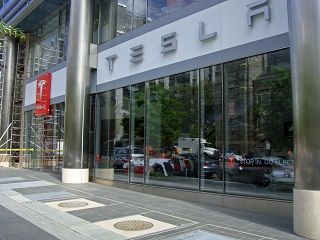From Guest Blogger Jordan: Tesla Might Get an Exemption from California’s Environmental Laws

The electric car maker has said that there were five states – Arizona, California, Nevada, New Mexico, and Texas – under consideration for the Gigafactory, with California being left behind in the race early on. While all states have offered all sorts of incentives to Tesla hoping to convince the car maker to build the plant on their territory, California will need to do something extra to lure the Gigafactory. The state has very strict environmental regulations, that would increase Tesla’s operational costs if it were to build the factory there, so California has decided to step up the bid and offer a substantial benefits package, in addition to exemption from its environmental laws.
California’s incentive package include a $500 million in tax breaks, and an offer to waive some of the strictest provisions of the California Environmental Quality Act for Tesla, that would otherwise delay the plant’s construction for a few more years and make it much more expensive. The governor’s office has said that the state is willing to speed up the review process that is usually required by this law, and is intended to determine the potential environmental impacts of each development project. In addition to this time-consuming process, the state’s environmental rules impose very high smog certification fees, as well as some of the highest vehicle registration fees in the country.
All these extra costs and the complicated regulatory procedures have deterred many investors from realizing their projects in California, and the state obviously didn’t want to lose another huge investment that would have a great impact on its economy. Tesla’s Gigafactory will cost $5 billion, $2 billion of which will be invested by the car company itself, with the remaining $2 billion to $3 billion coming from several partners. Once it goes live, the plant is expected to employ as much as 6,500 workers, which is arguably the biggest incentive for all states to try and land it.
However, California may face serious backlash over the decision to waive environmental laws to get Tesla to build the plant there, as it sends a message that not every investor is treated the same, and that not everyone is equal before the laws, which could make other companies invest their money elsewhere.
